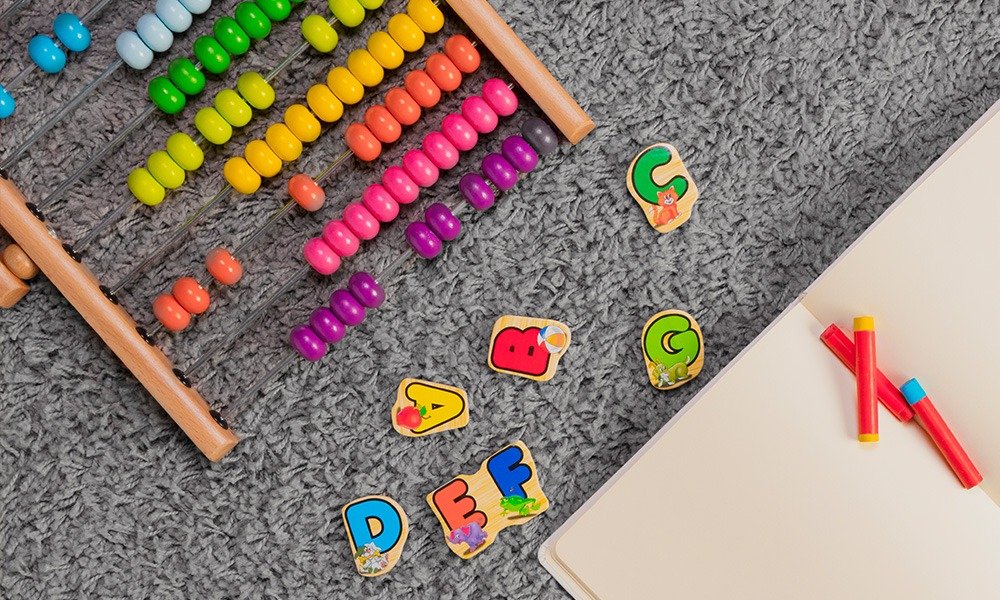
How to choose learning toys for children of different ages: A practical guide Leave a comment
How to choose learning toys for children of different ages: A practical guide
In this fast-paced era of parenting, we are often faced with a question: what is best for children to play with? Do they just want fun or something that also improves their thinking, imagination and understanding?
Learning toys, that is, toys that teach children something while playing, have become the priority of every sensible parent today. But the question arises — which toy is suitable for which age group of children?
Let us understand it simply according to the age.
1. Infancy (0 to 12 months): The world of initial touch and colors
At this age, the child does not learn to speak, but his world begins with seeing, hearing and touching. So, while choosing a toy, keep two things in mind — sensitivity and safety.
Suitable toys:
- 🧩 Soft Rattles
How it helps: Develops baby's hearing skills.
Features: Soft sound, colorful, non-toxic, easy to grip for little hands. - 🪞 Mirror Toys
How it helps: Builds early sense of self-awareness; baby looks at himself, smiles.
Features: Safe plastic mirror, soft border all around. - 🌈 Textured Books
How it helps: Different tactile experiences, coordination of seeing-hearing-touch.
Features: Books made of cloth or plastic, which have textures like feathers, wool, leather.
2. Toddler age (1 to 3 years): Hands-on learning, verbal understanding
This is the age of “I will do it myself”. The child now wants to walk, talk and examine things by holding them. Therefore, toys should be such that promote his gross and fine motor skills.
Suitable toys:
- 🧱 Blocks
How it helps: Fine motor skills, recognition of colours and shapes, balance and building skills.
Features: Large size, rounded edges, non-swallowable. - 🚗 Push and pull toys
How it helps: Direction control while walking, hand-foot coordination, muscle development.
Examples: Wooden cart, animal-shaped wheel toys. - 🎵 Musical toys
How it helps: Response to sound, early understanding of musical rhythm.
Features: Soft sound, better if not battery operated (less risk).
3. Preschool age (3 to 5 years): Flight of imagination
Now the child imitates you — becomes a doctor, a mother, runs a shop. His imagination is getting sharper. This is the time to give him role-play and creative toys.
Suitable toys:
- 🩺 Role-play toys (Doctor Kit, Kitchen Set)
How they help: Social behaviour, imagination, communication skills.
Features: Lightweight, safe plastic, does not break into many pieces. - 🎨 Art and craft materials
How they help: Creativity, colour perception, fine motor skills.
Examples: Crayons, watercolours, stickers, soft scissors. - 🧩 Educational puzzles
How they help: Thinking skills, co-ordination, patience.
Examples: Map of India, animal recognition, number puzzles.
4. School-going kids (6 to 10 years): The age of thinking and understanding
At this age, kids develop reasoning and problem-solving abilities. They are now eager to create and learn, not just play.
Suitable toys:
- ⚙️ LEGO and building sets
How they help: Problem solving, creativity, habit of reading instructions.
Examples: Sets like LEGO City, LEGO Technic. - 📐 Maths and science games
How they help: Logical thinking, basic mathematical operations, initial understanding of science.
Examples: Math Bingo, Solar System Model Kits. - 🎲 Board games
How they help: Following rules, strategy, teamwork.
Examples: Chess, Connect 4, Scrabble Jr.
5. Pre-teens and teens (11 years and above): From curiosity to creativity
Now kids are growing up. Their questions are deeper — “Why is the earth round?”, “How is coding done?”, “How can I make my own game?”. This age calls for innovative and skill-building toys.
Suitable toys:
- 🤖 Robotics and Coding Kits
How they help: Technical thinking, future skills, innovation.
Examples: Arduino Starter Kit, LEGO Mindstorms. - 🧪 DIY Science Kits
How they help: Habit of experimenting, scientific approach.
Examples: Chemistry Set, Electricity Model Kits. - 🧠 Mind Games
How they help: Concentration, analytical thinking.
Examples: Rubik’s Cube, Sudoku, Brain Teasers.
📝 Conclusion: One toy, hundred benefits
Every child is different – his interests, his understanding and his pace. So, while choosing a toy, consider not just the age but also the needs and nature of the child.
- ✔️ Learning toys are not a luxury – they are a smart investment that strengthens the foundation of your child's development.
- ✔️ There are many options in the market today, but the right choice is the one that connects the child's mind, heart and hands – all three together.
Look at the quality, not the brand.
Give preference to toys that teach as well as play.
When the child plays, you should also sit with him for some time – that becomes the best “learning tool”.

